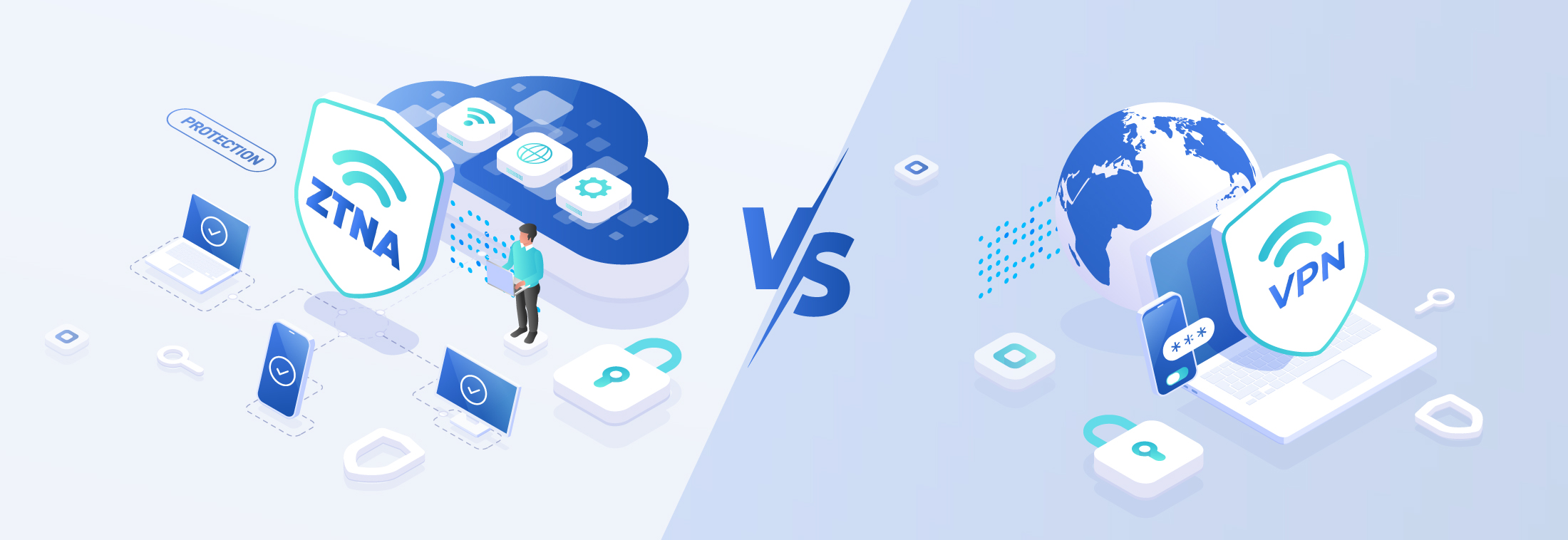Why Zero Trust Network Access May Be a Better Choice Than Traditional VPNs
Août 30, 2024 | Nareddy Saivikas Reddy
Remote and hybrid work models have become quite the norm in the post-Covid era. As a matter of fact, with businesses allowing their employees to work and access corporate resources from anywhere and at any time, the share of employees working remotely worldwide reached 28 percent by 20231. But although this flexibility benefits both employees and employers, it does come with significant security risks, especially when it comes to accessing corporate resources.
Organizations with geographically dispersed workforces often find it difficult to enable secure network access to corporate resources. The growing number of devices and applications accessing these resources remotely adds to the complexity of managing digital data and connections. To address these challenges, businesses typically resort to either a traditional Virtual Private Network (VPN) solution or a newer Zero Trust Network Access (ZTNA) solution.
Confused about VPN and ZTNA?
Wondering which one secures your remote workforce better? This blog breaks down both options, helping you understand their strengths and why ZTNA is the future of secure access.
What is Virtual Private Network (VPN)?
A virtual private network (VPN) is a traditional solution for creating a remote access connection between end users and internet resources or corporate networks. VPN works by establishing an encrypted tunnel for data transmission between the VPN application on the user’s device and the VPN endpoint on the internet /corporate network.
Virtual Private Networks (VPNs) are used for
Bypassing Geography-Based Restrictions:
By masking a device's real IP address and location, VPNs allow employees to access corporate resources hosted across the globe without any regional restrictions.Remotely Accessing Corporate Resources:
Businesses enable employees to work from anywhere by allowing them to securely access the company's internal network through a virtual private network (VPN).Ensuring Security while Using Public Wi-Fi Connections:
Employees working while traveling or at hotels, cafes, airport lounges, and conferences use public networks to access the company’s resources securely through a VPN.
VPNs are designed primarily to offer network-wide access, but this approach comes with some limitations, such as:
- Legacy VPNs come with outdated encryption protocols and are just too old for modern work environments.
- Legacy VPNs don’t offer granular access policies, they grant access to the entire corporate network, and user authentication only occurs at the initial connection.
- Once authenticated, users have broad access to internal resources, and all traffic travels through a tunnel, creating a potential bottleneck.
- Configuring and managing legacy VPNs can be difficult, especially for large and geographically dispersed workforces.
While VPNs address traditional perimeter-based security, their limitations and the evolving threat landscape have led to the development of the “Zero Trust” model2, offering a more comprehensive approach.
What is Zero Trust Network Access (ZTNA)?
Zero-Trust Network Access (ZTNA) is a security solution that simplifies secure remote access for employees. It ensures user access to authorized applications, data, and services based on predefined security rules. ZTNA verifies user identities through strong authentication methods and enforces strict access controls, ensuring authorized users only reach the resources they absolutely need. Thus, while VPNs grant access to the entire network, ZTNA can enforce granular access control over corporate resources.
Think of VPN as a traditional key that unlocks any door employees have access to, whereas ZTNA acts like a smart keycard. It grants granular access, allowing employees to access only the specific internal resources they are allowed to, thus aligning with Zero Trust Core principles of granting access to only required resources and blocking from rest.
Capabilities of Zero Trust Network Access
Granular Access Control:
Specifies applications and domains that can generate traffic towards the tunnel.Continuous Verification:
Ensures continuous verification for all users and devices attempting to access resources.Network Insights:
Provides insights into network traffic, allowing IT admins to identify and respond to anomalies rapidly.Device Access Control:
Allows only registered and compliant devices to send traffic through the tunnel.
Benefits of Zero Trust Network Access
Fast Deployment:
Effortless deployment via cloud-based infrastructure integration, eliminating the need for complex hardware or software management and costly support contracts.Ease of Use:
Once set up, it is easier for an end user to use than a traditional VPN.Greater Security than VPNs:
ZTNA uses a micro-segmentation approach that reduces the data flown through the tunnel and attack surface thereby minimizing the impact of malware gaining access to large, sensitive data segments.Remote-Work Friendly:
ZTNA empowers employees to access corporate resources from anywhere and at any time, all while maintaining robust security.Simplified App Segmentation:
ZTNA allows organizations to grant granular access to individual applications, simplifying security and reducing the burden of complex network segmentation projects.Enhanced Compliance:
ZTNA simplifies compliance by automatically capturing data like user details, time, application, and location on every access attempt, eliminating the need for manual log collection.
Conclusion
Though VPNs and ZTNA solutions both enable remote access to corporate networks, ZTNA is better than traditional VPNs as it continuously verifies all users, devices, and applications before granting access. This ensures resources are only accessible to the authorized and also limits the attack surface area in case of security attacks.
Source
Enhance Security and Boost
User Productivity with SureMDM
Subscribe for our free newsletter


